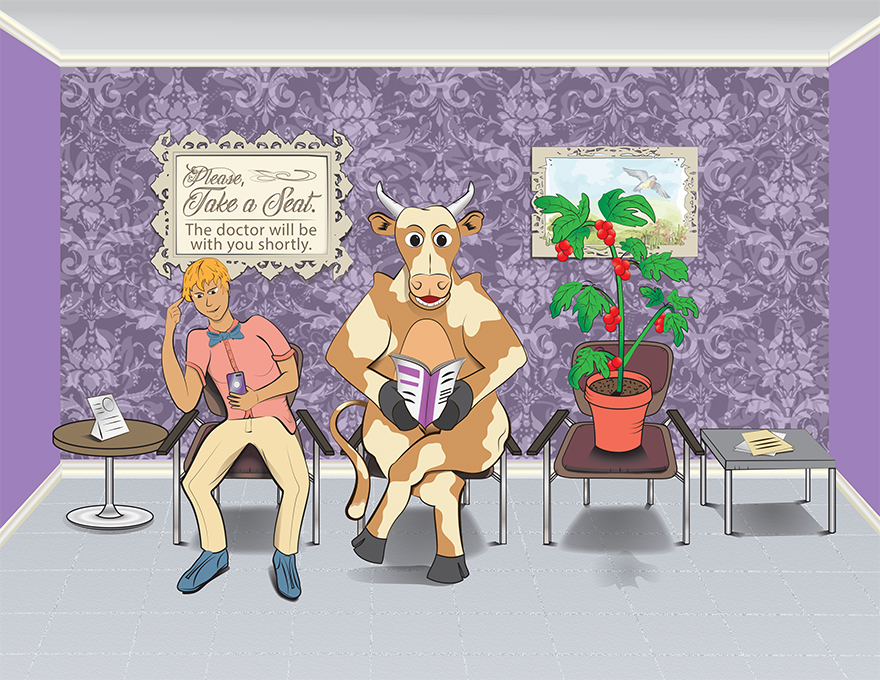Healthier Relationships

As the planet grapples with climate change, instability and shrinking resources, the link between humans, animals, plants and the environment is increasingly pronounced. The One Health approach is an opportunity to break the status quo and bring about radical change.
By Emily Leighton, MA'13
It’s been called India’s silent epidemic. A disease of the past with a stubborn grip.
Tuberculosis (TB). In a country of 1.3 billion people – one-sixth of the world’s population – it causes two deaths every three minutes.
Adding to the tragedy? These deaths are preventable.
The World Health Organization is working toward a TB-free world by 2035, supporting programs to address inequality in care and treatment. But to eliminate TB entirely, Dr. Francisco Olea-Popelka says we must also look to the animal population.
The newly appointed Beryl Ivey Endowed Chair in One Health studies zoonotic TB, a form of the disease transmitted between animals and humans. In India, due to socio-cultural practices and the burden of human and bovine TB, pathogens are being shared between these two species and cows through raw or unpasteurized milk, are not only infecting humans with bovine TB but are also reinfecting them with human TB.
“Preliminary data indicates this is possible, but this scenario has been neglected by researchers and it seems it is far more common than previously recognized,” said Dr. Olea-Popelka, who is a member of The International Union Against Tuberculosis and Lung Disease.
“Our health is not just the concern of doctors or conservationists; we all have a role to play.” — Dr. Francisco Olea-Popelka
As travel and global trade increase, as the number of people and livestock sharing the planet skyrockets, the future of human health is at risk.
TB is one example among many that points to the re-emergence of zoonotic diseases. Estimates indicate that 70
These outbreaks underline the interdependence of human health, animal health and ecosystem health. Coined by the Wildlife Conservation Society in 2004, the One World One Health concept links the health and well-being of humans to an increasingly polluted planet dealing with social and political instability and shrinking resources.
“If you start looking for these relationships, they are not hard to find,” explained Dr. Olea-Popelka. “We are all sharing this one planet.”
Born and raised in Patagonia at the southern tip of South America, Dr. Olea-Popelka grew up observing the close interaction between animals and humans. He studied veterinary medicine at Universidad Mayor in Santiago, Chile, and completed a master’s and doctoral degree in epidemiology at the Ontario Veterinary College at the University of Guelph.
At Schulich Medicine & Dentistry, he is applying this experience to build a campus-wide One Health initiative. “My vision is clear, I want Western University to be a leading institution globally with a reputation for excellence in this area,” he said.
In his role, Dr. Olea-Popelka intends to focus on four pillars: teaching, partnerships, real-world application and communication.
The School currently supports training in One Health at the undergraduate and graduate levels. Within the Bachelor of Medical Sciences program, the Honours Specialization in One Health focuses on the intricate link between animal health, environmental health, socioeconomic factors and human health. Created in collaboration with the Faculty of Social Sciences, it introduces students to various drivers of human health and disease through coursework and research.
The hope is that students who pursue graduate training in the field will build on this foundational knowledge, apply it to real-world issues and translate the research to key stakeholders.
“Communication is fundamental to the success of One Health. It’s not just about writing scientific papers, but about how the work will be communicated beyond academia to health professionals, government officials and community members – people who can use the information and act,” said Dr. Olea-Popelka.
But there are times when Dr. Olea-Popelka worries the One Health movement is perceived like ‘world peace’ – something most people
In order to demonstrate the value of the work, he argues that research and intervention must occur at the
“By sharing resources, expertise, facilities, time and effort, with less money, we can do more,” he added.
The creative ideas that will help One Health thrive are not only found in science and public health
To be successful, Dr. Olea-Popelka challenges researchers to break the status quo and set aside individual agendas. “This is an exciting time in our society. There is momentum to undertake radical change and a greater understanding of the delicate connection between all of us on this planet,” he said. “Our health is not just the concern of doctors or conservationists; we all have a role to play.”








